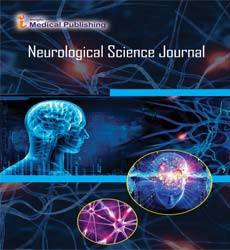Current Gaps and Needs of Research in Pediatric Neurological Disorders
Department of Physical Therapy, University of Health Sciences, Lahore, Pakistan
- *Corresponding Author:
- Afzal F
Post Professional Doctor of Physical Therapy
University of Health Sciences
Lahore, Pakistan
Tel: +92 42 111 333 366
E-mail: sheikh_farjad@yahoo.com
Received date: August 14, 2017; Accepted date: August 17, 2017; Published date: August 27, 2017
Citation: Afzal F (2017) Current Gaps and Needs of Research in Pediatric Neurological Disorders. Neurol Sci J. Vol. 1 No. 1:1
A lot of innovations have been done in neurological sciences, but still we need to work in the field of neurological science. Many conditions in neurological field still have not confirmatory treatment. After spinal cord injury patients became crippled for life. A compete transaction of spinal cord injury is difficult to treat. Similarly the muscular dystrophy and hereditary sensory motor neuropathy had no cure. In cerebral palsy there is lesion in immature brain that lead to activity limitation and disability. These conditions had no specific treatments and cure but we can manage these conditions to enhance the activity of daily life and increase functioning in these patients.
In neuro behavior sciences a number of conditions required attention of researcher. Autism spectrum disorder is a group of neurodevelopmental disorders characterized by social (social skills and socialization), communicational (speech and language) and behavioral (repetitive and stereotype) limitations. Impairments in sensory modulation and sensory processing are one of key features in children with autism spectrum and classify into hyperactivity, hypoactivity and attention seeking. Sensory integration therapy have been used to manage these problem in which all the senses are integrated to produce best, optimum and coordinated response. Vestibule system, touch, vision, auditory and proprioception are integrated in this approach.
In pediatric neurology, still we are facing a lot of challenges. Erb’s palsy in pediatric neurology is very interested topic among the clinicians. Shoulder external rotation has prime importance in fulfilling a lot of activities of daily life. So restoring external rotation should be a focused goal in patients with Erb’s palsy. Physical therapy treatments have satisfactory effects in improving the impairments and disabilities in patient with erb’s palsy however restoring external rotation is a difficult task for therapist and patient as it showed limited improvement on modified mallet scale, active movement scale and scapular elevation. Still there are no focused physiotherapy techniques that only focused the external rotation in patient with erb’s palsy however some surgical procedure are available to restore external rotation but their efficacy and cost is always questionable. When treating patients with erb’s palsy, therapists should always pay special attention in restoring the external rotation in erb’s palsy. Neurological injuries are always time consuming and challenging not only for patients but also for health professionals, as recovery to neurological tissue follow the unique pattern of recovery that depends upon the severity of neurological tissues. Erb’s palsy is a lower motor injury to lower trunk of brachial plexus. A limited data is available on difficulty and challenges that therapist and patient have to face during rehabilitation of erb’s palsy.
In developmental neurology, neonatal reflexes play important role in development of tone and posture and posture are basic for the development of skills. In cerebral palsy a number of neonatal reflexes persist and hinder the learning of skills in these children.
Open Access Journals
- Aquaculture & Veterinary Science
- Chemistry & Chemical Sciences
- Clinical Sciences
- Engineering
- General Science
- Genetics & Molecular Biology
- Health Care & Nursing
- Immunology & Microbiology
- Materials Science
- Mathematics & Physics
- Medical Sciences
- Neurology & Psychiatry
- Oncology & Cancer Science
- Pharmaceutical Sciences
